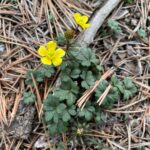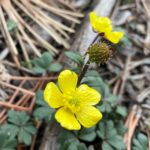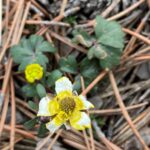Προβατάρης, Ρανούνκουλος ο καδμικός υποείδος ο κύπριος
Etymology of Ranunculus cadmicus subspecies cyprius: "Ranunculus" in Latin means "little frog" and it is called as such by Pliny either because many Ranunculus species are aquatic or found near water, just like frogs or because many grow where frogs abound. "Millefoliatus'' is from Latin and it means "bearing a thousand leaves", from "mille" and "foliatus", a reference to the plentifulness of its foliage. The name "cadmicus" derives from the Ancient Greek acropolis "Cadmea" of Theba, founded by legendary Cadmus, from where it is said to originate. It is called "cyprius", meaning "the Cypriot", because it is a Cyprus endemic plant.
The Ranunculus genus in Cyprus is rich, with at least 22 taxa (species or subspecies), a little hard to distinguish one from the other. Three of these kinds are exclusively encountered in occupied northern Cyprus.
Ranunculus cadmicus subspecies cyprius in Cyprus is encountered only between 1250–1900 metres in central mountainous Cyprus. Its flowering period is between March and May.
How to identify Ranunculus cadmicus subspecies cyprius:
As it is encountered only between 1250–1900 metres in central mountainous Cyprus, it could only be mistaken with bulbosus subsp. bulbosus (which is found only at an altitude of 1200 metres), millefoliatus subsp. leptaleus (which is found at a maximum altitude of 925 metres), paludosus, and muricatus.
Cadmicus subspecies cyprius has very characteristic vivid dark green leaves.
Muticatus's achenes are shortly echinate-muricate, with a broad flat marginal wing. Its basal leaves are reniform, deeply 3-7-lobed; its upper leaves are sometimes simple.
For paludosus the lower leaves are often simple, broadly ovate-cuneate.
Cadmicus subps. cyprius has leaves broadly reniform, palmately divided into blunt lobes; the plant is glabrescent, often tinged purple.




